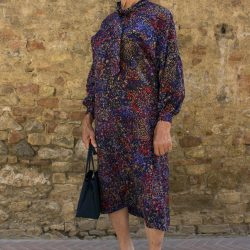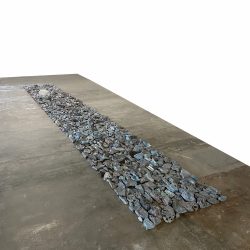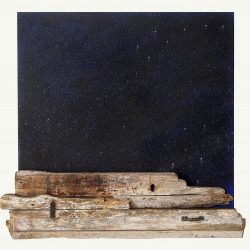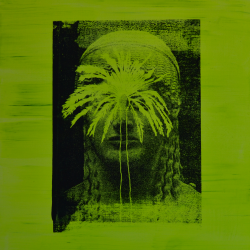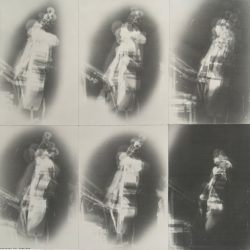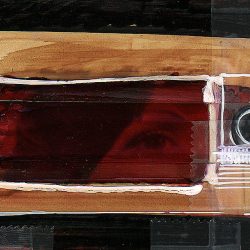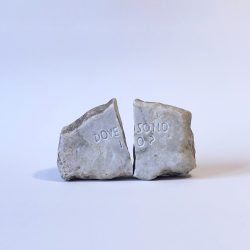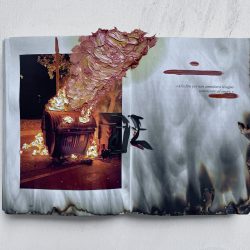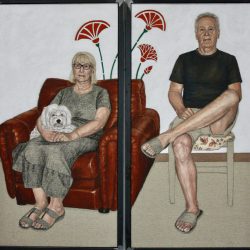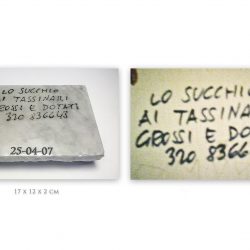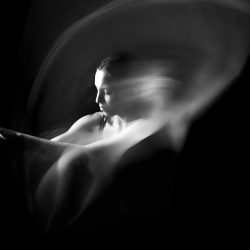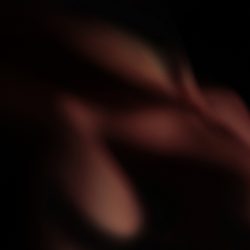work
IMPRESSIONI, porta aperta bada ladri
| category | Installation |
| subject | Human figure, Nature, Political / Social |
| tags | |
| base | 70 cm |
| height | 90 cm |
| depth | 12 cm |
| year | 2015 |
IMPRESSIONS
"Porta aperta bada ladri"
Within the space there are clay monolyths with the impressions of those objects that once came into contact with this place and that today are the only surviving witnesses. They hold within themselves memories that they retell to me in part through anecdotes of their youth (Porta aperta bada ladri).
The form is that of bricks that used to be made by hand, there within the estate, thanks to a natural clay pit that I identified through the stories of the older people I met during my residency. They pointed out to me more or less where to look in the woods in order to find the material with which to make my bricks.
Technically then, I decided to use the crude clay without removing its impurities because these, too, are part of the history of the place; the dust, the shells, and the fossils come directly from an era when Certaldo was covered by the sea, roughly 5 million years ago, and they mix with the memories of the figures in my work. Inside the wine cellar where the vats are found, I decided to install a video along the stairs in order to provide viewers with a sensory connotation.
12 tiles of crude, unfired clay, 70×90 cm
2015
Clay is a flexible material with the ability to assume many shapes and, therefore, to preserve the impression of an induced memory. My research is based on collective, historical, and individual memory. During a residency at the Tenuta di Sticciano estate, I involved the citizens of Certaldo and Fiano, asking them to tell old stories from which I then extracted objects that would be most accessible to memory.
Objects serve to visually help memory. e symbolic value of clay as a material is primordial, and is therefore free of the superstructures that might place it in a specific time-frame. In some ways, it was like forcing a memory into clay as a kind of synecdoche. At the end of the experience, I decided not to re the tablets so as to reinforce the concept of “mnemonic responsibility” which must be cultivated, continually double-checked, to maintain the details that otherwise would get lost. I wanted to underline the extreme precariousness of memory through the use of enormous, formidable blocks which, if le exposed to the elements, are in danger of being manipulated and resituated.
Within the space there are clay monolyths with the impressions of those objects that once came into contact with this place and that today are the only surviving witnesses. They hold within themselves memories that they retell to me in part through anecdotes of their youth (Porta aperta bada ladri).
The form is that of bricks that used to be made by hand, there within the estate, thanks to a natural clay pit that I identified through the stories of the older people I met during my residency. They pointed out to me more or less where to look in the woods in order to find the material with which to make my bricks.
Technically then, I decided to use the crude clay without removing its impurities because these, too, are part of the history of the place; the dust, the shells, and the fossils come directly from an era when Certaldo was covered by the sea, roughly 5 million years ago, and they mix with the memories of the figures in my work. Inside the wine cellar where the vats are found, I decided to install a video along the stairs in order to provide viewers with a sensory connotation.
"Porta aperta bada ladri"
Within the space there are clay monolyths with the impressions of those objects that once came into contact with this place and that today are the only surviving witnesses. They hold within themselves memories that they retell to me in part through anecdotes of their youth (Porta aperta bada ladri).
The form is that of bricks that used to be made by hand, there within the estate, thanks to a natural clay pit that I identified through the stories of the older people I met during my residency. They pointed out to me more or less where to look in the woods in order to find the material with which to make my bricks.
Technically then, I decided to use the crude clay without removing its impurities because these, too, are part of the history of the place; the dust, the shells, and the fossils come directly from an era when Certaldo was covered by the sea, roughly 5 million years ago, and they mix with the memories of the figures in my work. Inside the wine cellar where the vats are found, I decided to install a video along the stairs in order to provide viewers with a sensory connotation.
12 tiles of crude, unfired clay, 70×90 cm
2015
Clay is a flexible material with the ability to assume many shapes and, therefore, to preserve the impression of an induced memory. My research is based on collective, historical, and individual memory. During a residency at the Tenuta di Sticciano estate, I involved the citizens of Certaldo and Fiano, asking them to tell old stories from which I then extracted objects that would be most accessible to memory.
Objects serve to visually help memory. e symbolic value of clay as a material is primordial, and is therefore free of the superstructures that might place it in a specific time-frame. In some ways, it was like forcing a memory into clay as a kind of synecdoche. At the end of the experience, I decided not to re the tablets so as to reinforce the concept of “mnemonic responsibility” which must be cultivated, continually double-checked, to maintain the details that otherwise would get lost. I wanted to underline the extreme precariousness of memory through the use of enormous, formidable blocks which, if le exposed to the elements, are in danger of being manipulated and resituated.
Within the space there are clay monolyths with the impressions of those objects that once came into contact with this place and that today are the only surviving witnesses. They hold within themselves memories that they retell to me in part through anecdotes of their youth (Porta aperta bada ladri).
The form is that of bricks that used to be made by hand, there within the estate, thanks to a natural clay pit that I identified through the stories of the older people I met during my residency. They pointed out to me more or less where to look in the woods in order to find the material with which to make my bricks.
Technically then, I decided to use the crude clay without removing its impurities because these, too, are part of the history of the place; the dust, the shells, and the fossils come directly from an era when Certaldo was covered by the sea, roughly 5 million years ago, and they mix with the memories of the figures in my work. Inside the wine cellar where the vats are found, I decided to install a video along the stairs in order to provide viewers with a sensory connotation.



